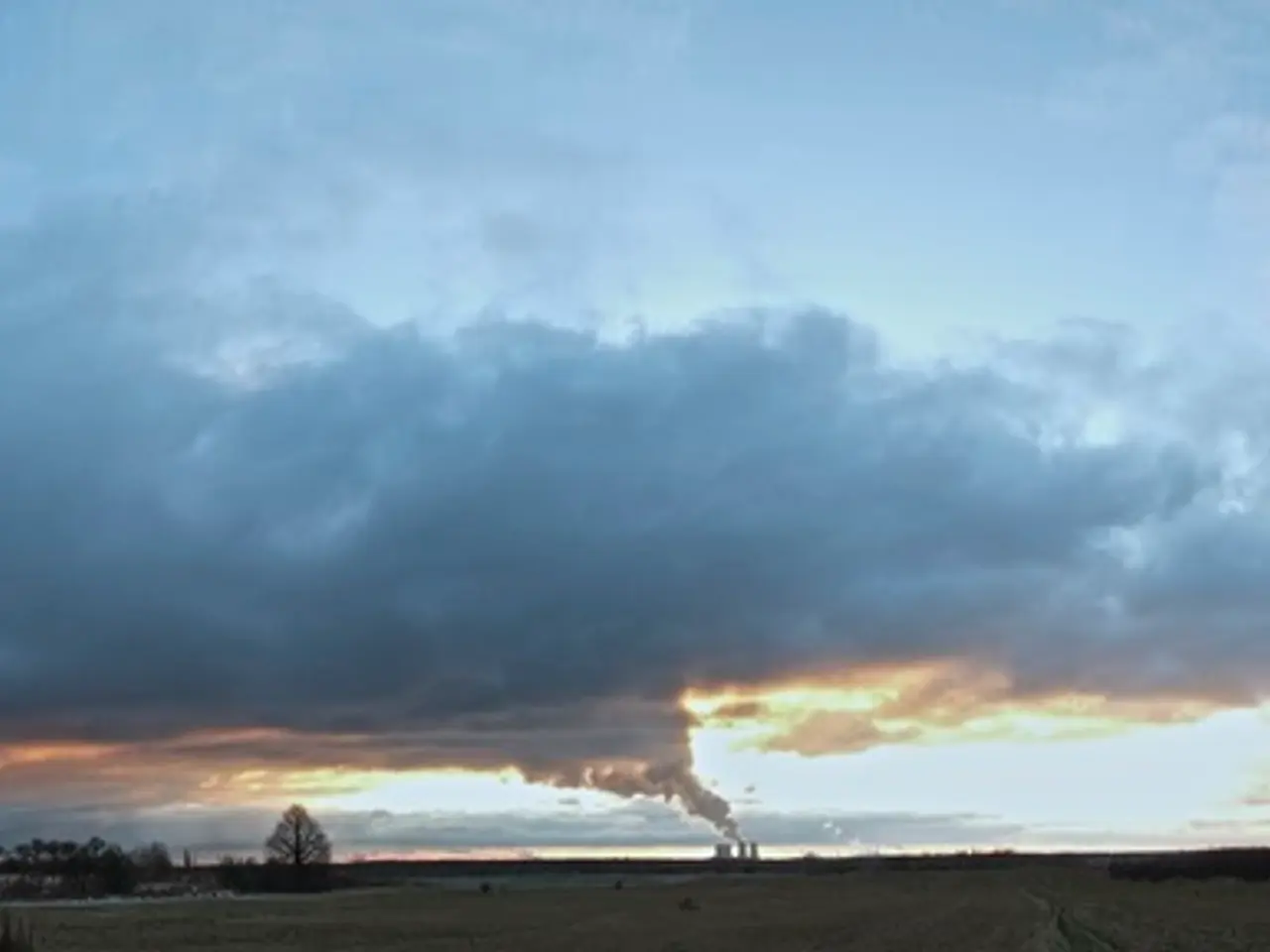Thunderstorm-induced asthma: an explanation
In the springtime, especially during thunderstorm seasons, people with asthma and seasonal allergies need to take extra precautions to avoid potential asthma attacks. This condition, known as Epidemic Thunderstorm Asthma (ETSA), is triggered by a combination of a thunderstorm and high pollen levels.
A medical professional may consider a person's symptoms, family medical history, and personal medical history when making an asthma diagnosis. To diagnose ETSA, a doctor may conduct physical examinations, lung function tests, allergy testing, blood tests, and tests to determine how certain factors affect a person's breathing.
High concentrations of airborne fungal spores and pollen, especially grass pollen, can sharply increase during and after thunderstorms. Rapid changes in weather, including sudden temperature drops and high humidity associated with thunderstorms, contribute to the release and dispersion of these allergenic particles. Environmental conditions promoting mold and spore growth, such as heavy summer rains followed by thunderstorms, also play a significant role in ETSA.
Sensitization to specific fungal allergens like Rhizopus nigricans is a significant risk factor, especially in humid environments where this fungus thrives. People sensitive to pollen or those with conditions such as seasonal allergic rhinitis and asthma have a higher risk of experiencing ETSA.
To prevent an asthma attack related to ETSA, high-risk individuals should take the following precautions:
- Monitor local weather and pollen/spore forecasts closely ahead of and during thunderstorm seasons to anticipate high-risk periods.
- Limit outdoor activities during thunderstorms or high pollen/spore days, especially when grass pollen counts and mold spores are elevated.
- Use preventive asthma medications as prescribed, such as inhaled corticosteroids and possibly pre-emptive antihistamines to reduce airway inflammation and allergic responses before high-risk periods.
- Maintain good indoor air quality by controlling humidity (keeping bedroom humidity below 50%) and reducing mold exposure indoors.
- Ensure immediate access to asthma reliever inhalers during potential high-exposure times.
- For those highly sensitized to fungal spores including Rhizopus, extra caution regarding damp environments and mold exposure can be beneficial.
It is important to note that people without these risk factors can also develop ETSA. ETSA events are rare and in countries such as Australia, where grass pollen levels peak between October and December.
To stay safe during thunderstorms, it is crucial to control asthma or seasonal allergies throughout the year. This includes taking prescribed medications regularly, using allergy medicine and treatments, and avoiding known asthma triggers. It is also important to remember that thunderstorms can worsen asthma due to cold downdrafts, wind, humidity, and lightning breaking up particles to a size that people can inhale.
In summary, epidemic thunderstorm asthma risk rises with weather and environmental factors that increase airborne allergenic particles like grass pollen and mold spores. High-risk individuals can best prevent attacks by avoiding exposure during thunderstorms, monitoring local forecasts, managing indoor humidity and mold, and adhering closely to asthma management plans during the springtime and thunderstorm season.
References:
[1] Asthma Australia. (n.d.). Thunderstorm Asthma. Retrieved from https://www.asthmaaustralia.org.au/healthprofessionals/resources/thunderstorm-asthma/
[3] National Health and Medical Research Council. (2016). Epidemic Thunderstorm Asthma in Victoria 2016: A Review of the Evidence. Retrieved from https://www.nhmrc.gov.au/guidelines-publications/eh122
[5] National Asthma Council Australia. (2021). Thunderstorm Asthma. Retrieved from https://www.nationalasthma.org.au/health-professionals/resources/thunderstorm-asthma/
- The science of diagnosing asthma includes evaluating a person's symptoms, personal and family medical history.
- To diagnose Epidemic Thunderstorm Asthma (ETSA), a doctor may conduct various tests like physical examinations, lung function tests, allergy testing, blood tests, and tests to determine the impact of certain factors on a person's breathing.
- Sensitization to specific fungal allergens, like Rhizopus nigricans, is a significant risk factor for ETSA, especially in humid environments.
- People sensitive to pollen or those with conditions like seasonal allergic rhinitis or asthma have a higher risk of experiencing ETSA.
- High-risk individuals should monitor local weather and pollen/spore forecasts during thunderstorm seasons to anticipate high-risk periods.
- To prevent an ETSA-related asthma attack, limit outdoor activities during high pollen/spore days and thunderstorms, especially when grass pollen counts and mold spores are elevated.
- Use prescribed medications, such as inhaled corticosteroids and pre-emptive antihistamines, to reduce airway inflammation and allergic responses.
- Maintaining good indoor air quality by controlling humidity and reducing mold exposure indoors can help prevent an asthma attack.
- Ensure immediate access to asthma reliever inhalers during potential high-exposure times, and for those highly sensitized to fungal spores, extra caution regarding damp environments and mold exposure can be beneficial.
- Proper management of asthma and seasonal allergies throughout the year is crucial, including taking prescribed medications regularly, using allergy medicine and treatments, and avoiding known asthma triggers.
- Thunderstorms can worsen asthma symptoms due to cold downdrafts, wind, humidity, and lightning breaking up particles to a size that people can inhale.
- In addition to respiratory conditions, other health-and-wellness concerns like skin-conditions, mental-health, cardiovascular-health, neurological-disorders, eye-health, hearing, fitness-and-exercise, and nutritional needs should also be considered for overall health maintenance.




